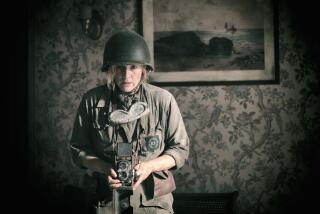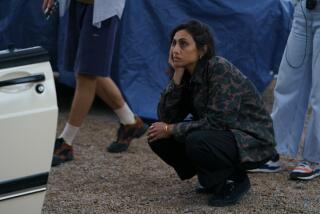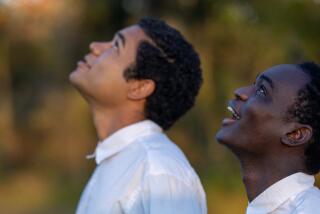Movie review: ‘Certified Copy’
- Share via
“Certified Copy,” Abbas Kiarostami’s lovely labyrinth of a film, is best seen without having read reviews that divulge what the director reveals — or hints at — only gradually (this one won’t). The two-hander’s teases and twists carry an electric charge, particularly in the riveting performance of Juliette Binoche, by turns dithery, fevered and open-hearted.
She plays the unnamed French owner of an antique shop in Tuscany, raising a tween son who challenges her every move — when he bothers to look up from his video game. The film’s action consists of the day she spends with a British author, James Miller (opera singer William Shimell), whose new book gives the film its title. A sort of middle-aged “Before Sunrise” unfolds, meandering and talky. But from the get-go these characters’ colloquy is a mutual provocation, not a romantic seduction.
A baffling undercurrent of accusation keeps their exchanges off-balance and out of sync, although on the surface they would seem a good fit: two good-looking, independent, ferociously intelligent people. In his screen debut, Shimell is perhaps too much of a buttoned-up cipher, but he conveys a level of preoccupation that suits this role.
Like its central couple, the film is a volatile mix of the studied and deeply felt. James’ book of art criticism concerns the overvaluation of “authenticity” when nearly everything — human behavior as well as our artifacts — is a form of reproduction, an attempt to copy or recapture what has gone before. The film itself can be viewed as an outsider’s reproduction of European art-house cinema, complete with a character called She.
Kiarostami (“Taste of Cherry”) contributed memorable segments to the Western compilation films “Tickets” and “Lumière & Company,” but “Certified Copy” is the first feature he’s made outside his native Iran. Abetted by the elegant camerawork of cinematographer Luca Bigazzi, he resists Tuscan travelogue clichés and zeros in on place as a repository of memory and emotion.
Following his characters’ serpentine path through the hilltop village of Lucignano — known for its art forgeries and weddings — he also deconstructs romance. In a moment of comic poignancy and startling beauty, young newlyweds orchestrate a group photograph, and everyone performs for the camera. After a stranger’s unbidden insights (or are they misconceptions?), the story breaks open, into what might be a plaintive masquerade or a deeper level of truth. Role-play and ritual offer the illusion of solid ground in an endless, aching sea.
More to Read
The biggest entertainment stories
Get our big stories about Hollywood, film, television, music, arts, culture and more right in your inbox as soon as they publish.
You may occasionally receive promotional content from the Los Angeles Times.










